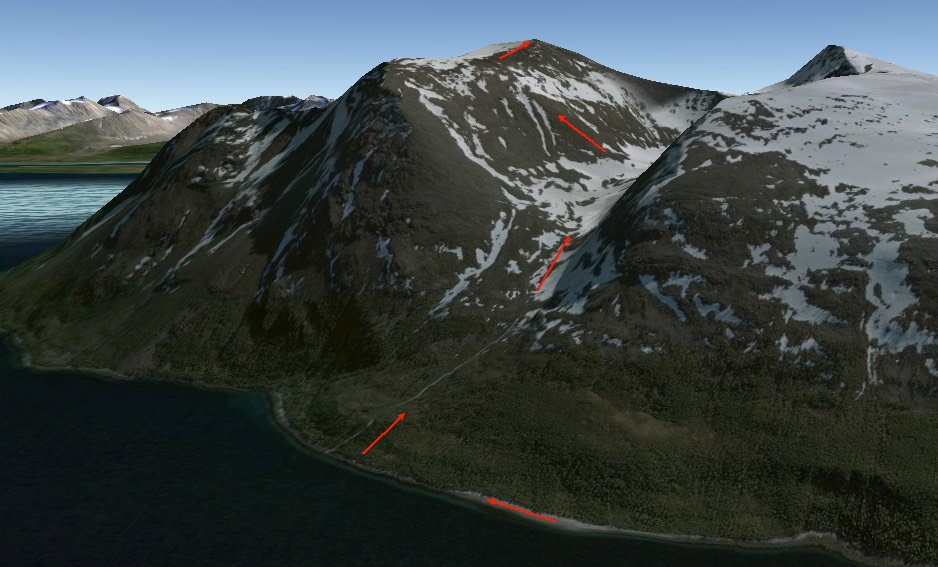Ullstinden / Addjitgáisa (1093), Tromsø.
The Sami name for Ullstinden is Addjitgáisa. Áddjá means grandfather or old man. It is uncertain if this was regarded as a holy mountain, but the old Sámi people used to call this mountain Stuoranjárgga áhčči, which means Stuoranjárgga´s father or grandfather. Stuoranjárgga is the Sámi name for the Tromsø mainland.

A short route description: start from Snarbybukta and follow the sea shore for 3,5 km to Stallvikåsen on the North side of the mountain. Proceed up the valley Stallvikskaret / Stálluriehppi to the little lake at 550 m. Continue up the West side (30-40°) to the summit. Distance to the summit: 6,5 km.
Ullstinden´s Main summit as seen from the South summit (1078).
A view from Snarbybukta / Addjitluokta towards Stallvikåsen, the headland to the left.
The bridge over Snarbyelva.
Storsandnes.
The lower part of Stálluriehppi / Stallvikskaret. A stállu is a mythical figure. It could be a man-eating troll, or a ghost, a demon or a zombie sent by a Noaide (a Sami shaman) to hurt the enemies. They are evil and stronger than humans, but, supposedly, also more stupid.
Riehppi means a valley that is difficult to enter.
The West side from Stálluriehppi / Stallvikskaret. This is one of the most quiet places I´ve ever been to. I wouldn´t enter this V-shaped valley in winter due to the avalanche danger.
The South summit (1078) and a good example of a cirque, an amphitheatre-like valley head, formed at the head of a valley glacier by erosion.
Hurtigruta from the summit plateau.
Jægervasstindene in Lyngen.
Looking North towards Karlsøya and Vannøya.
The South summit from the SW ridge.
Stálluriehppi / Stallvikskaret.
Distance to the summit: 6,5 km. Time to the summit: 2:10.
Geir Jenssen, 21. June 2013.
Bibliography:
Sveen, Stine Benedicte. (2003). Reinen, reineieren og reinbeitelandet. Hovedfagsoppgave i arkeologi. Universitetet i Tromsø.
Fables and folk tales about Stállu and giants.